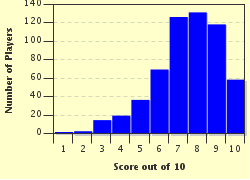Quiz Answer Key and Fun Facts
1. The earth is estimated to be around 4.5 billion years of age, and around 3 billion years ago, the first life forms are believed to have surfaced. What name do we give to the smallest unit of life?
2. Around 230 million years ago, in the Triassic Period, the first dinosaurs began to emerge, dominating the landscape of Earth. Which of these dinosaurs, known for its bony plates, was NOT a carnivore, or meat eater?
3. We have seven continents now, but Alfred Wegener, a German geologist, proposed that they used to be conjoined as one continent around 200 million years ago. What was the name given to this 'supercontinent'?
4. Around 65 million years ago, life dramatically changed on planet Earth. A huge number of dinosaurs were made extinct, and many other lifeforms were threatened. Based on finding a larger than average amount of rare element iridium in the Earth's crust, what did Luis Alvarez believe that the cause of the mass extinction was?
5. Following the famed mass extinction, the Earth became far closer to what we know it as in modern times. Which of these was NOT one of the changes observed in the Paleogene period?
6. In the last 7 million years or so, the first types of humans evolved, and around 200,000 years ago the first modern humans originated in Africa. What is the name of this species, which is the name we refer to ourselves as today?
7. Around 3500-4000 BC, the human culture developed once again. Nomadic tribes began to develop permanent residences, writing and laws. In which 'cradle of civilisation', where the Tigris and Euphrates rivers met, did some of this cultural progress take place?
8. The Axial Age, which lasted from about 800 to 200 BC, refers to a period of time characterised by warfare, strife and famine.
9. Starting in the 14th century, a cultural movement spread from Italy following the relatively unprogressive Middle Ages. The heliocentric world view was conceived, the 'New World' was discovered by Columbus, and the development of humanism all took place in this time period. What is this cultural period called?
10. Late in the 20th century, the advent of the internet and computer technology made the acquisition and transferral of knowledge ever more rapid than ever seen before. What is the name given to this period of time which aimed to allow instant access to all kinds of knowledge?
Source: Author
malik24
This quiz was reviewed by FunTrivia editor
bloomsby before going online.
Any errors found in FunTrivia content are routinely corrected through our feedback system.

